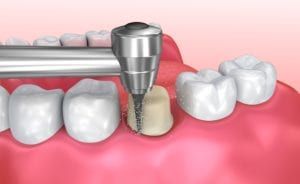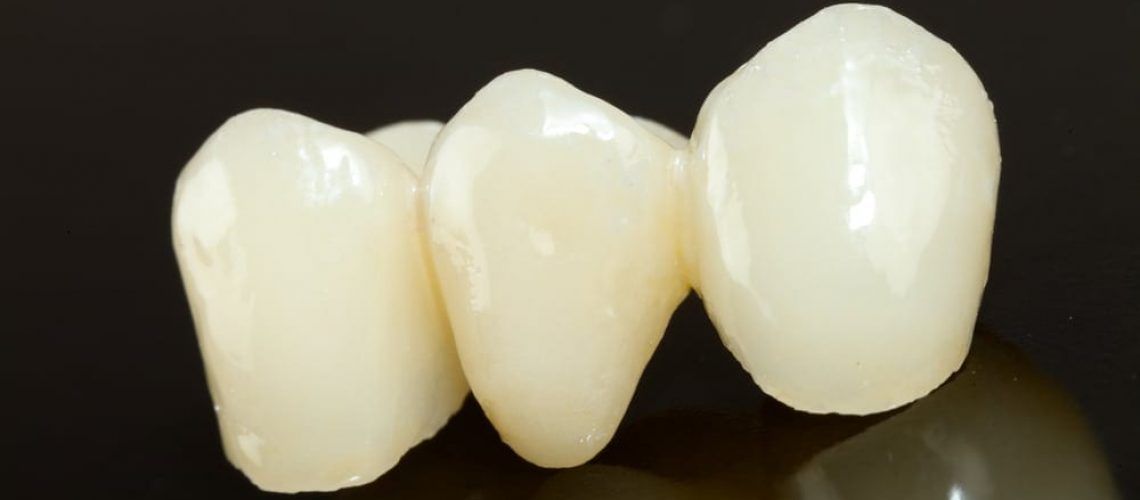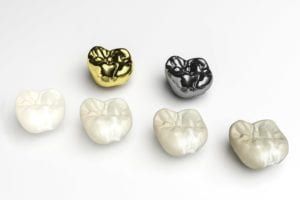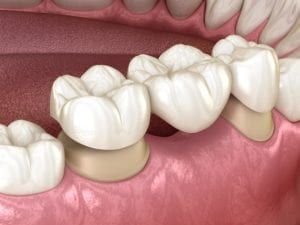Dental crowns and bridges are indirect restorations that are used to restore or replace damaged, decayed, or missing teeth. Indirect restorations refer to dental restorations that require the use of a dental laboratory for fabrication. Since both crowns and bridges are fabricated by a dental laboratory, they can be customized for fit, shape, and color.
Dental crowns are used to restore a single damaged or decayed tooth, while dental bridges are used to replace a missing tooth or two. Dental crowns are caps that fit over the remaining tooth structure in order to protect it. Dental bridges are composed of two dental crowns on either side of a pontic, or fake tooth. In this way they form a bridge of teeth over gaps left by missing teeth.
Did you know…
Italians were one of the first ancient civilizations to experiment with making dental crowns and bridges out of materials such as bone, gold, and ivory.
Frequently Asked Questions:
Am I a candidate for a dental crown or bridge?
Candidates for dental crowns are individuals who have teeth that are significantly damaged, decayed, or in need of a root canal. Dental crowns are often placed on teeth after root canals to provide support and protect the tooth. In some cases, dental crowns can also be used to improve the size, shape, color, or spacing of teeth.
Candidates for dental bridges are individuals who have one or more missing teeth surrounded by otherwise healthy teeth. In order to have a dental bridge placed, the teeth on either side of the missing tooth must be able to adequately support a dental crown and fake tooth.
If you believe you may be a good candidate for a dental crown or bridge, schedule a consultation today with your Saratoga dentist, Dr. Perry Woo.
Are there different types of dental crowns?
Yes. There are six different types of dental crowns to choose from. Each type of dental crown has their own pros and cons, so Dr. Woo will need to discuss these with you to help you decide which crown is best for your individual dental needs. Types of dental crowns include:
- Stainless steel crowns are often used temporarily as well. They are most commonly used on the primary teeth of children, but can also be used as a temporary restoration for adults. Temporary crowns are placed after the tooth has been prepared, but before the permanent restoration has been fabricated. Temporary crowns are only worn for a few weeks at most.
- Metal crowns are made from platinum, copper, gold, or base metal alloys such as cobalt-chromium and nickel chromium.
- Porcelain fused to metal (PFM) crowns have a metal interior with an exterior porcelain coating.
- Porcelain crowns are entirely metal free and use ceramic to achieve a natural look.
- All-resin crowns are made from dental composite resin and can be color matched.
Are there different types of dental bridges?
Yes. There are four different types of dental bridges including:
- Traditional bridges are the most commonly used type of dental bridge. They are composed of a fake tooth attached to one dental crown on each side.
- Maryland bonded bridges uses a fake tooth surrounded by a metal framework that is cemented to the teeth instead of dental crowns.
- Cantilever bridges are rarely used, but may be able to be used towards the back of the mouth. This type of bridge only uses a single anchor point, rather than two anchor points.
- Implant-supported bridges use dental implants as their anchor point instead of dental crowns or a metal framework.
What can I expect when having a dental crown or bridge placed by Dr. Woo?

To place a dental crown or bridge, two dental appointments are needed. During the first appointment, the tooth will be prepared. After anesthetizing the area to keep you comfortable, Dr. Woo will remove any decayed tissue and reshape the remaining tooth structure to support a dental crown. If a dental bridge is being placed, this process will be repeated for both anchor teeth. Once the teeth have been properly shaped, a dental impression will be taken to obtain the information necessary for the dental lab to fabricate the final restoration. A temporary crown or bridge will then be placed until the permanent restoration has been completed. During the second appointment, the temporary crown will be removed and the permanent restoration will be checked for fit. It will then be cemented in place.



